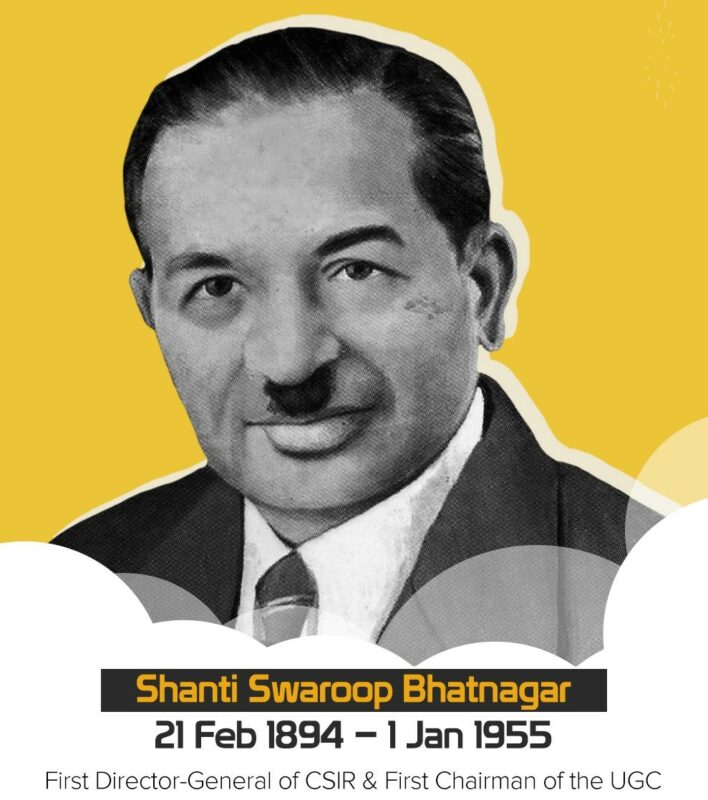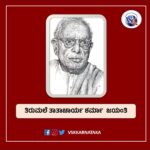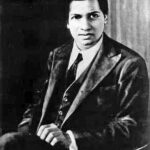– THEJASWINI, BENGALURU
I have always been associated with many prominent figures eminent in
other ways, but Dr. Bhatnagar was a special combination of many things,
added to which was a tremendous energy with an enthusiasm to achieve
things. The result was he left a record of achievement which was truly
remarkable. I can truly say that but for Dr. Bhatnagar you could not have
seen today the chain of national laboratories. – Pandit Jawaharlal Nehru
Dr Shanti Swarup Bhatnagar was the Founder Director (and later first
Director General) of Council of Scientific & Industrial Research (CSIR)
and is largely remembered for having established various chemical
laboratories in India. He is, infact, revered as the “father of research
laboratories” in India. He established a total of twelve national
laboratories such as Central Food Processing Technological Institute,
Mysore, National Chemical Laboratory, Pune, the National Physical
Laboratory, New Delhi, the National Metallurgical Laboratory, Jamshedpur,
the Central Fuel Institute, Dhanbad, in addition to numerous other
laboratories.

Dr Bhatnagar played a significant role along with Homi Jehangir Bhabha,
Prasanta Chandra Mahalanobis, Vikram Ambalal Sarabhai and others in
building of post independent S & T infrastructure and in the formulation
of India’s science and technology policies. Dr Bhatnagar concurrently
held number of important position in the Government. He was the first
Chairman of the University Grants Commission (UGC). He was Secretary of
the Ministry of Education and Educational Adviser of Government. He was
the first Secretary to Ministry of Natural Resource & Scientific Research
and also the Secretary of Atomic Energy Commission. He played an
instrument role in the establishment of the National Research Development
Corporation (NRDC) of India. Dr Bhatnagar also played an important role
both in the constitution and deliberations of the Scientific Manpower
Committee Report of 1948.
‘It may be pointed out that this was the first ever systematic assessment of the scientific manpower needs of the country in all aspects which served as an important policy document for the government to plan the post-independent S&T infrastructure.’
Dr Bhatnagar was born on 21 February 1894 at Bhera, in the district of
Shapur in Punjab (now in Pakistan). His father Parmeshwari Sahai
Bhatnagar, a distinguished graduate of the Panjab University, was the
headmaster of a high school in Bhera. His mother Parbati Bhatnagar was
the eldest daughter of Pearey Lal, who was a distinguished engineer.
Under the influence of his maternal grandfather the young Bhatnagar not
only developed a taste for engineering and science but also became
interested at a very early age in his grandfather’s instruments, geometry
and algebra and in making mechanical toys. Dr Bhatnagar’s interest in
poetry and literature also came from his mother’s side.
Dr Bhatnagar passed the Intermediate Examination of the Panjab
University, in 1913, in the first division and joined Forman Christian
College for the BSc degree. After taking the Bachelor’s degree, in 1916,
he decided to take up his first formal employment as Demonstrator in the
Physics and Chemistry Department of the Forman Christian College. Later
he became the Senior Demonstrator in the Dyal Singh College. The
employment, however, did not hinder Bhatnagar’s efforts in pursuing
higher studies. He joined the MSc course in chemistry in the Forman
Christian College. After completing his Master’s degree he went to
England to complete his DSc from London University in 1921.
Upon returning to India, he immediately joined the newly established
Banaras Hindu University (BHU) as a professor of chemistry, where he
remained for three years. He wrote the ‘Kulgeet’, or University anthem.
Justice N.H. Bhagwati, the then Vice-Chancellor of BHU said: “Many of you
perhaps do not know that besides being an eminent scientist, Professor
Bhatnagar was a Hindi poet of repute and that during his stay in Banaras,
he composed the ‘Kulgeet’ of the University. Professor Bhatnagar is
remembered with reverence in this University and will continue to be so
until this University exists.” He then moved to Lahore as a Professor of
Physical Chemistry and Director of University Chemical Laboratories of
the University of the Punjab, where he worked till 1940. He had a
reputation as a teacher. It was as a teacher that he himself was most
happy.
His research interests included emulsions, colloids, and industrial
chemistry, but his fundamental contributions were in the field of
magneto-chemistry, the use of magnetism for the study of chemical
reactions. His research contribution in the areas of magneto-chemistry
and physical chemistry of emulsion were widely recognized. In 1928, he
and K.N. Mathur jointly developed the Bhatnagar-Mathur Magnetic
Interference Balance, which was one of the most sensitive instruments at
the time for measuring magnetic properties. It was exhibited at the Royal
Society Soiree in 1931 and it was marketed by Messers Adam Hilger and Co,
London. He, jointly with K.N. Mathur, wrote “Physical Principles and
Applications of Magnetochemistry” which is considered a standard work on
the subject. Dr Bhatnagar also closely followed the work of C. V. Raman
and Kariamanickam Srinivasa Krishnan at IACS on the Raman Effect, and in
particular the work of Krishnan and his partner, Santilal Banerjee, were
doing on the magnetism of small crystals.
Dr Bhatnagar’s first industrial problem was developing the process for
converting bagasse (peelings of sugarcane) into food-cake for cattle.
This was done for Sir Ganga Ram, the Grand Old Man of Punjab. He also
solved industrial problems for Delhi Cloth & General Mills, J.K. Mills
Ltd. of Kanpur, Ganesh Flour Mills Ltd. of Layallapur, Tata Oil Mills
Ltd. of Bombay, and Steel Brothers & Co. Ltd. of India. His major
innovation was an improvement of the procedure for drilling crude oil.
The Attock Oil Company at Rawalpindi (representative of Messers Steel
Brothers & Co London) had confronted a peculiar problem, wherein the mud
used for the drilling operation was hardened upon contact with saline
water, thereby clogging the drill holes. Bhatnagar realised that this
problem could be solved by colloidal chemistry. He added an Indian gum,
which had the remarkable property of lowering the viscosity of the mud
suspension and of increasing at the same time its stability against the
flocculating action of electrolytes.
M/s Steel Brothers was so pleased that they offered Bhatnagar a sum of
Rs. 1,500,000/- for research work on any subject related to petroleum.
The company placed the fund through the university and it was used to
establish the Department of Petroleum Research under the guidance of Dr
Bhatnagar. Investigations carried out under this collaborative scheme
included deodorisation of waxes, increasing flame height of kerosene and
utilisation of waste products in the vegetable oil and mineral oil
industries. Recognizing the commercial success of the research, the
company increased the fund, and extended the period from five years to
ten. Dr Bhatnagar persistently refused any personal monetary benefit from
his research fundings, and instead advocated for strengthening research
facilities at the university.
In 1934, Dr Bhatnagar was elected as one of the first Fellows of the
Indian Academy of Sciences. The following year, he was appointed as
Foundation Fellow of the National Institute of Sciences of India. For his
contributions to pure and applied chemistry, Bhatnagar was appointed as
an Officer of the Order of the British Empire (OBE), in 1936. The British
government knighted him in the 1941 New Year Honours List for his
contributions to the advancement of science. In 1942, Dr Bhatnagar was
appointed as Fellow of the Institute of Physics, and was also appointed
as Fellow of the Royal Institute of Chemistry that year. In 1943, the
Society of Chemical Industry, London, elected him as Honorary Member and
later as Vice-President. He was also elected as Fellow of the Royal
Society (FRS) in 1943.
In independent India, he was the President of the Indian Chemical
Society, National Institute of Sciences of India and the Indian National
Science Congress. He was awarded Padma Vibhushan in 1954 by the
government of India.
He died of a heart attack on 1 January 1955, at the age of 60.
In 1958, to honour his name and legacy, the Indian Council of Scientific
and Industrial Research (CSIR) instituted the Shanti Swarup Bhatnagar
Prize for Science and Technology for scientists who have made significant
contributions in various branches of science







